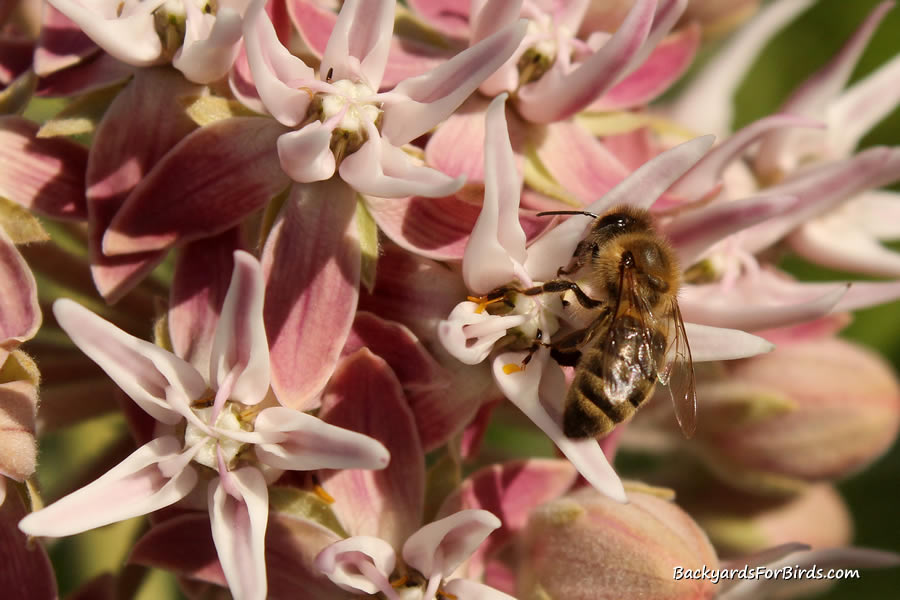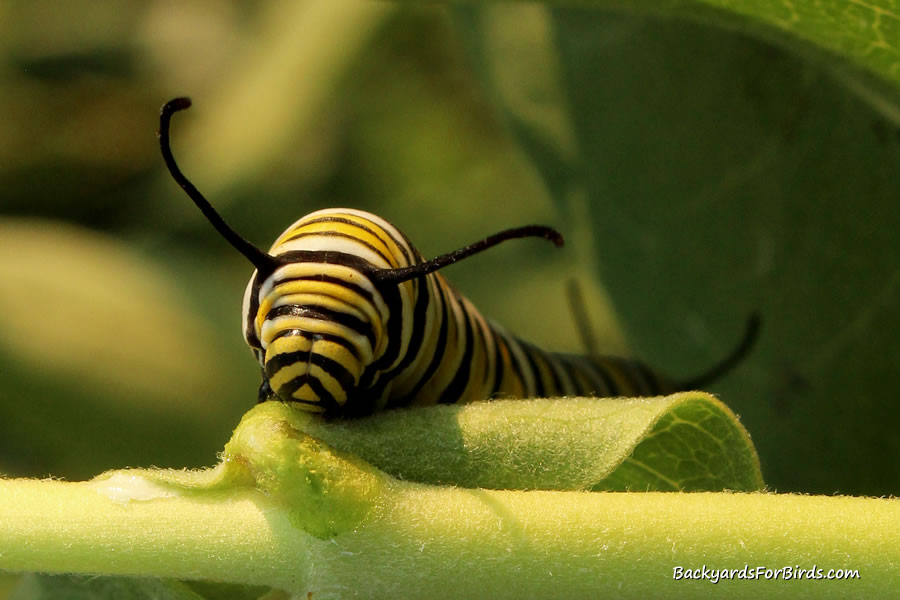With the onset of summer just around the corner, one of the most anticipated and watched-for creatures that visit my backyard is, without question, the monarch butterfly.
I can only think of a couple of things I would rather see in my yard than the iconic display of orange and black from a monarch butterfly fluttering around in the garden.
Monarch butterflies are just so relaxing to watch as they meander through the yard so casually on a warm summer’s day.
The monarch butterfly is in trouble, however, and part of their demise is the loss of habitat, particularly the loss of the milkweed plant along its migration routes and traditional breeding areas.
There are other aspects that also factor into the decline of the monarch population, but it is widely believed the loss of milkweed plants is a big cause of this decline.
It is well-known and well-documented monarch butterflies only lay their eggs on milkweed plants. It’s also well-known milkweed is the only species of plant monarch caterpillars will eat.
This is why the milkweed plant is so vital for monarchs. No milkweed literally means no monarch butterflies. It’s just that simple.
There are 73 varieties of milkweed plants in the United States, and the U.S. Forest Service lists 33 of them on their website as being used by the monarch butterfly as a host plant (a plant where they lay their eggs and the larva eat).
One of those plants, the showy milkweed, or Asclepias speciosa if you prefer the scientific terminology, is one of the milkweed plants monarchs do utilize as a host plant.

It is quite a beautiful plant when in bloom and it is very easy to grow as well. It makes a great addition to a backyard pollinator garden.
Monarch butterflies love showy milkweed, and they are very attracted to this particular species of milkweed, both a host plant to lay their eggs on and as a source of nectar when the plant is in full bloom.
Planting Showy Milkweed
The best time to plant showy milkweed seeds is in late fall, usually after the first frost.
Showy milkweed seeds need to be cold stratified to help the germination process, and the easiest way to do that is to plant them directly in the soil, thus letting them cold stratify naturally.
You can also cold stratify showy milkweed seeds indoors for 30 days prior to planting if you prefer, but the best way is to just sow the seeds in late fall and let nature take care of the rest.
I have tried planting Asclepias speciosa seeds without cold stratification and the germination rate is extremely low without it.
Seeds should be planted very shallow, about .25 inches under the soil’s surface.
It doesn’t take much to get a good stand of milkweed growing once you get a couple of sprouts started.
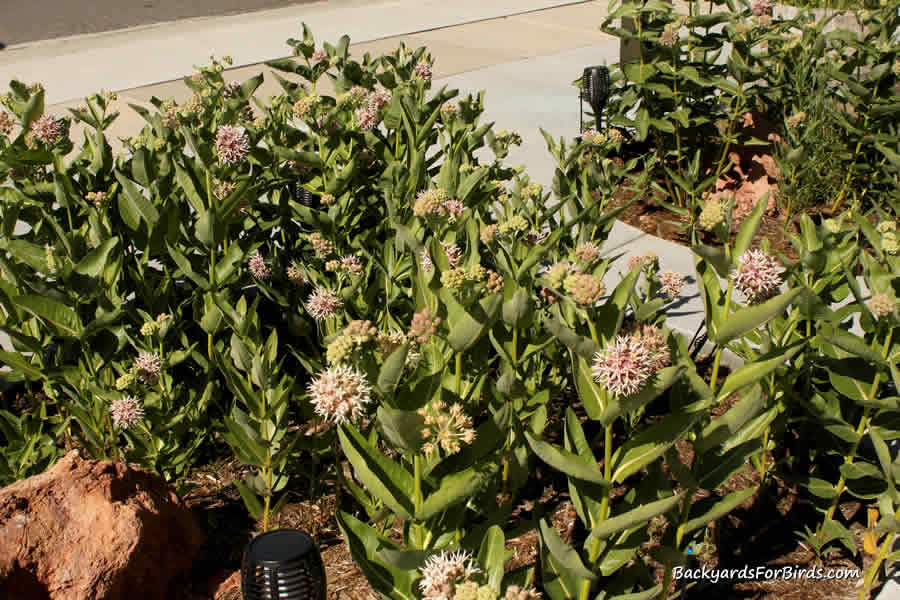
The hardest part of growing showy milkweed is getting the seeds to germinate. But once you have seedlings, the rest is quite easy.
Showy milkweed can be started in pots, but because of their large taproot and rhizomes, they don’t grow well in artificial pots. For best results, they should be planted directly in the soil during their first year if started in pots.
Also, because of their large taproot, showy milkweed doesn’t transplant well either.
I have had a little success digging up very small milkweed starts and transplanting them, but the success rate is far from encouraging to do as a normal practice.
Plant showy milkweed in a location that gets full sun. This particular plant doesn’t grow well with a lot of shade, so plant showy milkweed where it gets at least 6 or more hours of direct sunlight each day.
A little shade during the hottest part of the day is tolerable, but too much shade seems to keep their growth at bay.
I have had this particular type of milkweed grow in mostly shady spots for several years, and although it would come back each summer, it never really developed very well.
It would only grow to about 2 feet and didn’t bloom until after 4 years, whereas the showy milkweed normally blooms during the second year and usually grows to nearly 5 feet tall after a few years in more ideal growing conditions.
Taking Care Of Showy Milkweed
Once you have it started, the showy milkweed is an easy plant to take care of, and it will regrow year after year.
After it is established and growing for a couple of years, the showy milkweed plant requires very little to no additional water due to its deep taproot, which can pull water from deeper down in the soil than many other plants can.
In fact, this particular showy milkweed plant has been growing on my property for nearly 5 years now. It started out as an individual plant that somehow germinated on its own in a very dry but sunny location.
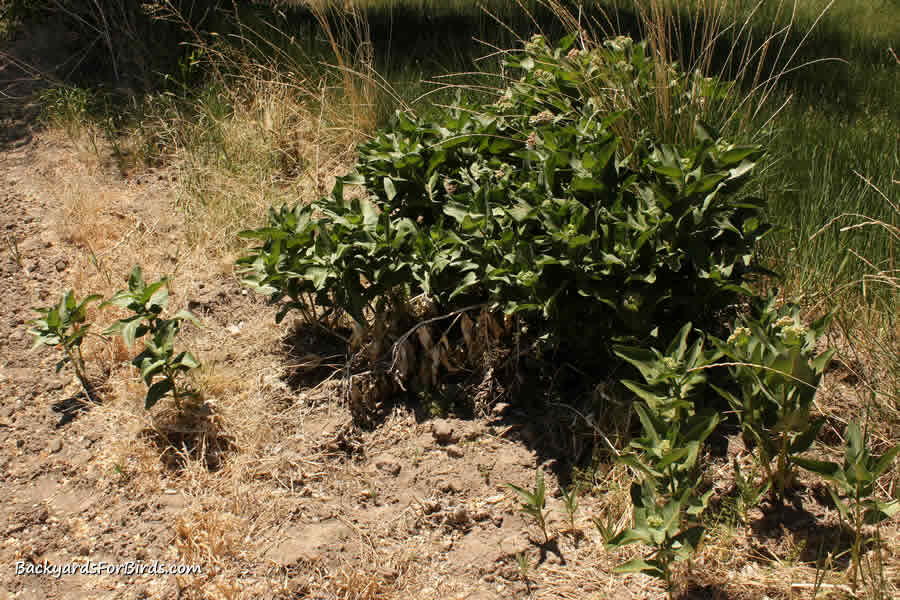
I watered it weekly during the summer for the first two years, but after that, it received no additional water other than very limited rainfall and what it can pull up from its deep taproot.
This year it is quite full and lush with numerous blooms on it. We are in a drought and it has had very little rainfall, but as you can see, it is still doing quite well with no additional water.
This is why the showy milkweed is a great plant for a pollinator garden, especially one where droughts are possible.
Once established, the showy milkweed needs very little water or care and is very attractive to monarchs.
Showy milkweed plants, once fully established, are very hardy and drought tolerant, which makes them a great plant for a backyard garden, especially out in the western United States where droughts seem to become more and more common each year.
Is Showy Milkweed Invasive
Like all milkweed plants, the showy milkweed is moderately invasive and will spread by both seed and rhizome, but steps can be taken to curb any unwanted spread.
Showy milkweed produces a seed pod with a large number of seeds that burst open when ripened. These seeds, once out of the seed pod will be carried by the wind and can germinate wherever they lay.
To help stop this natural spread of the milkweed seeds, take a rubber band and wrap it around the seed pod while it is still soft and green.
This will keep the pod from bursting and spilling the seeds when it ripens, where they would eventually be picked up by the wind and possibly carried all around the neighborhood.
The showy milkweed can also spread by rhizome, a shallow lateral root that can sprout up nearby as a new plant. This is not as nearly aggressive as by seed and it usually only sprouts up around the main plant.
Other Benefits Of Showy Milkweed
Showy milkweed not only attracts monarch butterflies as a host plant but its bloom and nectar will attract other pollinators such as swallowtail butterflies, painted lady, bees, and hummingbirds.
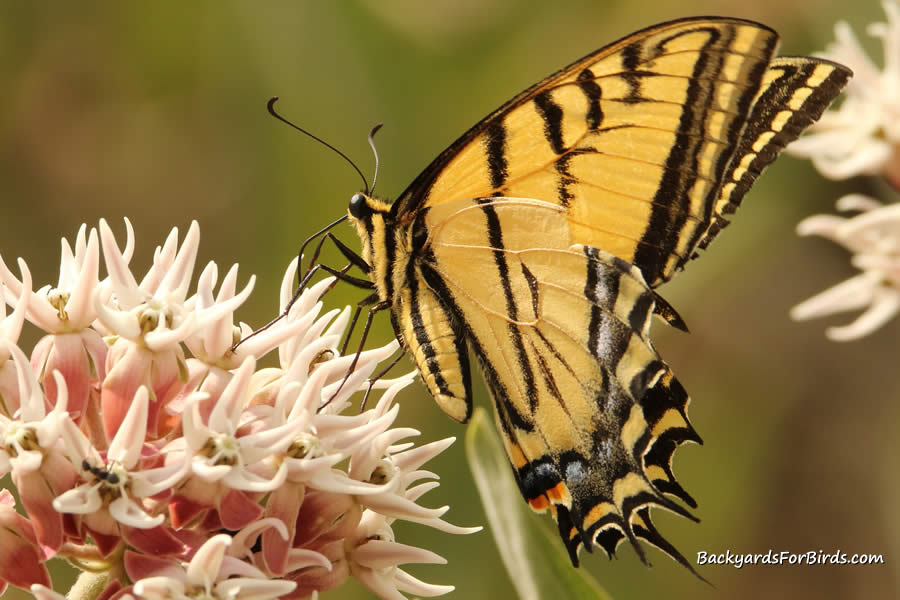
It’s quite an attractive plant when in full bloom, and the showy milkweed also has a nice aroma when it flowers. It is a nice addition to any pollinator garden.
Bees are especially attracted to the nectar of the showy milkweed when it’s in bloom.
Today, in fact, part of our milkweed patch was in bloom and numerous bees were feeding on the nectar all day long. Attracting and feeding important pollinators, such as bees, is a very beneficial side benefit of planting showy milkweed.
Conclusion
Although the monarch butterfly is in peril with a plummeting population, especially out in the western parts of the United States, we can take steps in our own yards and plant milkweed to help reverse this dire trend.
It doesn’t take much to make a difference either. My brother planted milkweed seeds in his yard only 3 years ago, and now he has a tall, healthy stand of milkweed plants that attract a variety of creatures, including butterflies.
Last year, we found our first monarch caterpillar on his milkweed and it successfully metamorphosed into a butterfly, so we all can make a small but very important difference in helping save the monarch butterfly by planting milkweed in our backyards.

Without host plants, such as the showy milkweed, the monarch butterfly can’t survive.
Nurseries seem to always promote nectar plants and flowers to attract butterflies, but the most important part of saving the periled monarch butterfly is providing milkweed. And that is something we can all do in our own backyards.
Don’t get me wrong, however, nectar plants are also crucial, especially for migration, but without the milkweed plant, there would be no monarch eggs laid, no caterpillars to hatch, and no butterflies to feed up our offering of flowers.
The best situation is when we offer a mixture of nectar plants throughout the season with a patch or two of host plants nearby, such as the showy milkweed plant.
The monarch butterfly needs both to survive, but it is the host plant, the milkweed plant, in particular, that seems to get left off the list of importance when backyard gardens are in the works.
Let’s help the monarch butterfly and add some milkweed to our backyard gardens. If we all do a little, we can all accomplish a lot.
Subscribe
If you are into birds, bees, butterflies, and other interesting creatures found in a backyard garden, I offer you to subscribe to our blog.
We send out email notifications each time a blog article is posted so if you like backyard birds, butterflies, and the like, subscribe to our blog for more information about giving nature in our own backyards a helping hand.
